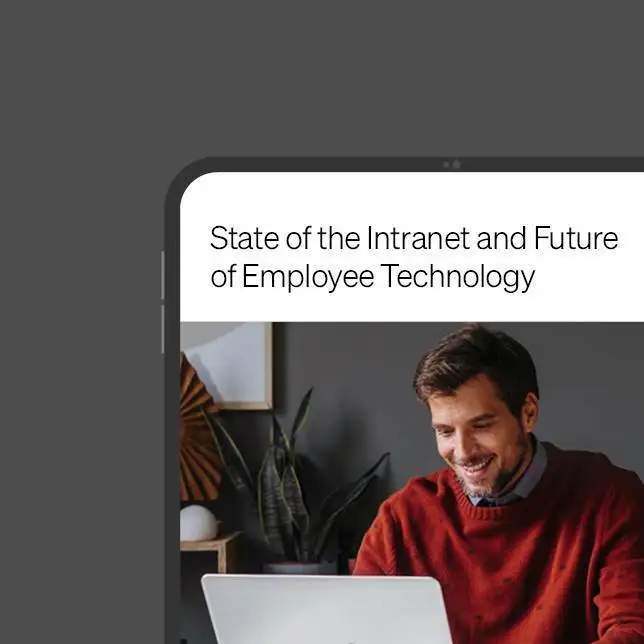This article was originally published on Mister Editorial.
It’s always about money. Artificial intelligence is here to stay not because it’s cool or fun or makes life easier. (It’s all that.) AI is here to stay because it will make or save more money.
- As datasets, computer models and computing power improve, AI will increasingly be adopted by organizations large and small because it makes processes more efficient.
- Greater efficiency leads to enhanced productivity, which leads to more profit.
- Evidence: “It would be hard to overstate the degree to which discussions of AI dominated this year’s World Economic Forum,” wrote Alan Murray for the CEO Daily newsletter. “While tempestuous politics and geopolitics, the climate challenge, and an uncertain economy all had their place in the formal agenda, every discussion somehow seemed to find its way back to the disruptive technology.”
That’s why comms pros need to get on board with AI.
Increasingly, bottom-line goals will be achieved by adopting AI across operations, sales, security, manufacturing — you name it.
Comms should not be an exception.

All aboard! This image was created using DALL-E with the prompt, “a scene depicting people on a dock waiting to board a ship in the style of Paul Cézanne.
Comms pros have a funny relationship with new technology. For various reasons — budget, resourcing, allergies — we can be slow to adopt new technology. (How many of us are just now exploring videos shot on iPhones instead of experimenting with comms for the metaverse?)
There is a slowness to embrace AI’s potential to level up our profession and individual roles.
- Some of the resistance is a knee-jerk reaction to new-fangled wizardry. There’s irony in some of the anti-AI missives that dot the comment sections of our favored social media channel. Against tech tools that make communication easier? I’ll wager that the anti-AI laments aren’t written on Remington typewriters and faxed to LinkedIn.
- Some of the hesitancy is based on fear. If you don’t know much about AI except what you read in the headlines, you’d think that AI is coming for anyone who uses words for a living.
- And some of it’s just plain ignorance. People don’t know what they don’t know. AI may be all the hype, but how are people actually using it in their roles? And how are people supposed to keep up when gobs of AI tools are released every day?
This article will help you get your team over these obstacles. Here are 14 ways to get your team on board with using AI, divided into the following sections:
What to know when using AI in comms strategy
Set expectations
Mindlessly chasing technology is futile. (Remember the employee app you thought everyone in your company would be thrilled to use?) But resisting technology altogether is equally ineffective.
Tech as an extension, not a replacement
Just as an astronomer uses a telescope to extend her capabilities to see farther into the galaxy, a comms pro can use AI technology to reach new heights in her role.
By now you’ve heard the tired trope that AI won’t replace you but someone using AI will. There’s truth in the statement, as I’ve been saying since the early days of ChatGPT. But for a timid employee, maybe there is a softer way to say the same thing.
For example, emphasize that AI technology extends the comms pro’s capabilities; it doesn’t replace them.
Gently suggest that someone using AI technology will have a leg up on those who don’t; they’ll be more efficient and productive, which means they may be first in line for exciting projects and promotions.
The ‘technology as a colleague’ analogy
When you hire a new person you’re willing to give them the benefit of the doubt if they make a mistake. New hires get a grace period to prove themselves. In other words, you’re willing to give new teammates a chance.
What if the team viewed AI as a new hire? Initially, there might be skepticism, but with time and interaction, this “teammate” could become an invaluable part of the crew.
If you’re willing to give fallible humans a chance, why not technology?
Present case studies of successful adoption
Show, don’t tell. Present examples of comms pros and teams that have successfully used AI in their work. (And show them how those pros are still employed.) Such case studies can serve as both inspiration and a practical guide.
- Here are reports from MIT, Cision, and Wadds Inc. that show how white-collar professionals and comms pros are more productive when they employ AI.
Try asking your LinkedIn network for examples. I’m continuously surprised and inspired by Mister Editorial readers who have (publicly and privately) admitted to using AI for a variety of use cases, from drafting executive memos to enhancing headshots to editing podcast scripts to creating comic strips for employees!

Same prompt, but this time in the style of Salvador Dalí
Learn more about using GenAI to increase productivity
Start small
Asking your team to implement a strange AI tool for every part of their workflow is about as effective as asking a home cook to whip up a nine-course molecular gastronomy tasting menu. It will be overwhelming, messy, gross, and possibly cause injuries. No, chef, you must start with an amuse-bouche.
Starting small balances innovation with caution, allowing teammates the mental space they need to embrace new tech in a way that is sustainable and effective.
Ease fears
The easy stuff is also the one area where comms folks seem to be freaking out the most: content creation. When you talk about AI’s role in content creation, focus attention on how the technology streamlines processes.
Acknowledge the team’s superior writing skills and show where AI lacks talent, especially around understanding company culture and the ability to “humanize” a story. Then show them how AI can automate or jumpstart the everyday stuff (e.g., press releases, social media posts, emails from the Chief Security Officer reminding employees about the importance of two-factor authentication), so they can use the saved time for more valuable work.
Related: ChatGPT Prompts for Small but Common Comms Tasks (Intellicomms)
Involve teammates in implementation
Collaborate with the team to choose AI tools for test projects. Pick an area that nobody enjoys doing (e.g., sentiment analysis, taking and summarizing meeting notes). Or pick a backburner project that doesn’t threaten anyone’s current portfolio (e.g., transcribing videos, translating articles, updating profile photos).
If everyone has a say in how the team moves forward, the team will feel involved and more engaged in the project.
Everyone learning something new together is also a bonding experience.
Start with a small project
Success in small projects builds confidence. As comms pros become comfortable with AI in smaller applications, their confidence grows, making them more open to tackling larger, more complex tasks.
One example may be an AI-enhanced social media campaign. This involves selecting tools and processes that cover content creation, optimization, publishing, data analysis and reporting. This small but meaty project can help the team:
- understand how AI can create or enhance relevant content and boost audience engagement.
- gain insights into the best practices for timing and personalizing social media content.
- learn how to interpret AI-driven analytics to improve future campaigns.

Same prompt, but this time in the style of Henri Rousseau
Check out this guide for optimizing AI prompts
Reward and encourage
Recognizing efforts and small wins makes the team more enthusiastic and motivated to keep tinkering with AI. This, in turn, fosters a culture of learning (growth mindset).
Reward adoption and innovation
Acknowledge team members who effectively integrate AI insights into communication strategies or campaigns. Create a quarterly award program, complete with an AI-designed certificate, where a teammate is recognized for outstanding use of an AI-enhanced technique.
Encourage experimentation
Propose a “sandbox” approach — a safe space for employees to experiment with AI technology without fear. Tell them that failure in the sandbox isn’t a setback. Every misstep is a learning process and is a step forward in learning what works and what doesn’t.
The entire team benefits from the creativity unleashed in this arena.
(Arena, derived from the Latin harēna, arēna; sand, a sand-strewn place of combat in an amphitheater. See what I did there? Arena… sandbox… You don’t always need AI to have fun in comms.)
Stay informed
Thanks to dozens of major elections happening around the world, 2024 will be awash in AI-generated misinformation. It’s already in the news, which may increase anxiety over the tech’s proper place in society and the workplace.
(“One of my two predictions” for comms pros in 2024 is about having to deal with deepfakes.)
What’s more, AI technology is rapidly evolving. Long-term success can only happen if you’re on top of an ever-changing digital landscape.
Address concerns and fears
Discuss AI’s role in transgressing or maintaining ethical standards in communications. Perhaps you can hold twice-yearly meetings where these issues are discussed and debated, with the help of an outside expert.
Regular updates and feedback sessions
Hold monthly or quarterly meetings to discuss new AI tools in the comms space. Admittedly, this can be difficult to keep up with, but finding and reviewing a few tools a year shouldn’t be burdensome.
My database of AI-related comms tools has more than 300 entries across 16 categories (e.g., content generation, research assistance, operations), and it grows weekly. This year I’ll do my best to introduce some of them to Mister Editorial’s paid members. (Upgrade here.)
Competitive edge
Raise your hand if you need more resources and an increase in your budget. (Comms-rades worldwide raise both hands.)
Staying informed is not just about keeping up with the technology; it’s about maintaining a strategic advantage within your company.
Remember the money factor: A team that fosters continuous improvement and contributes to business goals has a better chance of getting more resources. Since you’re here, I’ll also mention that becoming an expert on AI + comms is one way you could earn more money in corporate comms.

Same prompt, but this time in the style of pop art
Test and assess
“In God we trust. Everyone else bring data.” This is a cliché in math and science circles that’s been around since at least the 1970s. Chances are that the C-suite at your company lives by this mantra, which is why it can be difficult to get leadership on board with intangible benefits like “employee engagement.”
To win at their game, use data to get the funds you need to bring AI tools into your realm … and any other project for which you need resources.
Skeptics may have a hard time arguing with proven results, which is why it’s important to track the results of your experiments.
Humans vs. machines vs. humans + machines
Just like you use A/B testing on messaging, you can set up A/B/C testing with AI. Take content creation, for example.
- Have your colleagues write a memo from scratch — from receiving the brief to the final (final) draft — using no outside assistance.
- Give the same assignment to a chatbot.
- And finally, have teammates conduct the exercise using an AI tool.
- Measure the results. How long did the entire process take for each of the options? How accurate was the content? What about message effectiveness? My guess is that the human + machine combo will win the majority of these contests.
- You can do this kind of A/B/C test on all kinds of everyday comms activities, such as writing social media posts, crafting just-the-facts intranet stories, brainstorming, generating FAQs, and on and on. Pick one that’s fun!
Testing different approaches can help your team discover the most effective tactics for several kinds of comms’ intangibles, such as creating engaging material, clarifying content and messages, and reaching the right audience.
Explore ChatGPT prompts for comms workflows
Keep it small
Small projects allow for quicker feedback loops. This rapid feedback is crucial for making adjustments and improvements before scaling up. What’s more, small successes can be powerful demonstrations of the value that new technology brings, making it easier to win over the skeptics.
Risk mitigation
Boring but important. Eventually someone — your boss, IT — is going to bring up the fact that external AI tools might be risky. Frequent assessment can help identify any potential risks or issues in the tech before you spend the time, energy and resources to go all in.
You must fact-check the work.
AI tools, particularly those used for creating messages that help run the business, need to convey accurate and contextually appropriate messages. Test, double- and triple-check the work so that you understand the quality of the tool’s output. The last thing you want is to send out an AI-generated mistake and kill the opportunity to advance your team.
Read up on ethical AI in software development
All aboard!

Same prompt, but this time in the style of maximalism
If you remember just one thing from this article: Go forth with the strong conviction that AI tech is an extension, not a replacement, of your teammates’ capabilities. Together you can explore and adopt AI technology that aligns with team goals and keeps the people — not the technology — at the center of the conversation.
If you remember seven more things:
- Set realistic expectations about using AI to advance your team’s goals.
- Find useful and proven case studies out there in the wild.
- Start small.
- Involve teammates in selection and implementation.
- Reward and encourage creative and effective uses of AI.
- Stay informed on tools, trends and ethics.
- Test, assess and iterate.
Bring it back to money
By the way — the advice in this article applies to managing up, too. If your boss is reluctant to try AI in comms, apply these tactics to show them how the technology can advance the team’s goals. To convince your boss, remember two things: use data as proof of the tech’s value and tie the effort to saving or making money.
Thought exercise: Take your test results to possible logical ends. Consider how the processes and results compare to that of, say, an intern or an outside contractor. Soon you may see that your teammates using AI for everyday comms tasks will be more cost-effective than increasing your headcount.
Bottom line, cash-money results may finally register with hesitant teammates and bosses. (See?! I did it again. Register … cash. Cha-ching! Words are fun.)
Take your AI game to the next level
Check out this five-part series on the basics of prompt engineering:

















